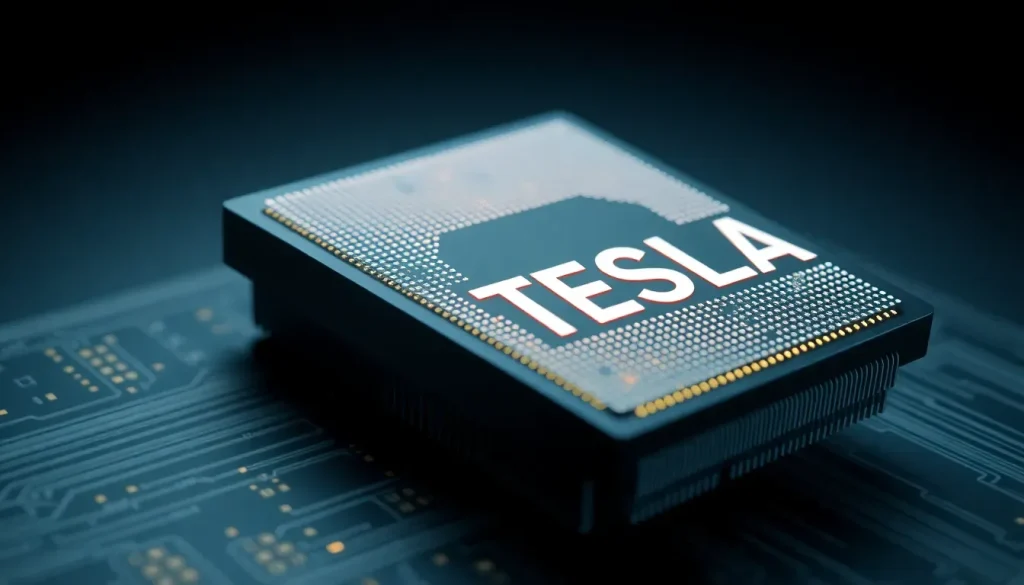Elon Musk Claims Samsung's Fab Outperforms TSMC for Tesla AI Chips

As the demand for artificial intelligence (AI) technology continues to skyrocket, companies like Tesla and Samsung are at the forefront of innovation. The collaboration between these two giants not only signifies a strategic partnership but also a potential leap in performance for AI chips that could redefine industry standards.
- Upcoming AI5 chips from Tesla promise massive performance gains
- Samsung's role in Tesla's AI chip production
- Understanding the Tesla A16 chip and its implications
- Comparative assessment: Samsung vs. TSMC
- The future of AI chips in automotive and beyond
- Challenges Ahead: Yield and Production Scalability
Upcoming AI5 chips from Tesla promise massive performance gains
Elon Musk's enthusiastic endorsement of Samsung Foundry's capabilities has significant implications for both companies. Recently, Musk announced that Tesla's new AI5 chips are set to deliver performance improvements of up to 40 times compared to previous generations. This leap in performance is a crucial milestone, marking a significant advancement in AI chip technology.
The production of the AI5 chips is a joint effort between Samsung and TSMC, with reports indicating that Samsung's Taylor fabrication facility is "slightly advanced" over TSMC's Arizona plant. This shift is particularly noteworthy as Tesla's previous chips were solely manufactured by TSMC.
This partnership reflects a growing trust in Samsung's manufacturing capabilities. The AI5 chips are anticipated to integrate innovative architectural changes, which Musk described as excluding the 'legacy GPU block'. Instead, the design emphasizes application-specific workloads, likely incorporating AI tile kernels that align with Tesla's ambitious computing goals.
- Improved performance: Up to 40x over AI4 chips.
- Collaboration with Samsung and TSMC.
- Significant architectural changes: Removal of legacy GPU.
- A focus on application-specific workloads for AI functionality.
- Integration of larger on-chip SRAM and accelerator tiles.
Samsung's role in Tesla's AI chip production
The deal between Tesla and Samsung is set against a backdrop of heightened competition in the semiconductor industry. This partnership is both a business opportunity and a technological challenge for Samsung, which is eager to establish itself as a leader in AI chip manufacturing.
The AI6 chips, intended to leverage Samsung's advanced 2nm process technology, are a testament to this ambition. However, the AI5 chips are particularly crucial as they represent a bridge to future innovations, building on the existing technology while introducing new capabilities.
Musk's confidence in Samsung's production capabilities speaks volumes. The expectation is not just to meet demand but to create an "oversupply" of chips. This ambitious goal would require Samsung's Taylor fab to significantly ramp up production, an undertaking that could solidify Samsung's position in the U.S. market.
Understanding the Tesla A16 chip and its implications
The Tesla A16 chip, while still under wraps, is expected to follow the advancements made with the AI5 and AI6 chips. This chip is projected to further enhance the performance of Tesla's AI systems, particularly in their self-driving vehicles.
Incorporating advanced features and capabilities, the A16 chip aims to take full advantage of the architectural changes initiated in the AI5 chips. It is anticipated that the A16 will:
- Utilize cutting-edge manufacturing processes for efficiency.
- Enhance real-time data processing and machine learning capabilities.
- Support a wider array of AI applications within Tesla's ecosystem.
Comparative assessment: Samsung vs. TSMC
The ongoing rivalry between Samsung and TSMC has significant implications for the semiconductor industry. Each company brings unique strengths to the table. Samsung has been rapidly advancing its technology, particularly in smaller process nodes, while TSMC has established itself as a reliable manufacturer for a multitude of high-profile clients.
Elon Musk's comments about Samsung's facilities being "slightly advanced" hint at a competitive edge that could potentially alter the landscape of chip production. Factors contributing to this include:
- Process technology advancements at Samsung.
- Capacity to meet high-volume production demands.
- Strategic investments in U.S. manufacturing capabilities.
This evolving competition will likely drive both companies to innovate further, ensuring that the end consumer benefits from improved products and services.
The future of AI chips in automotive and beyond
The implications of Tesla's AI chip advancements extend beyond the automotive industry. As AI technology continues to integrate into various sectors, the demand for high-performance chips will only increase. Tesla's innovations could set a precedent for other companies looking to enhance their AI capabilities.
In addition to automotive applications, potential future uses for these chips could include:
- Smart cities and infrastructure management.
- Healthcare technologies, including diagnostics and treatment planning.
- Robotics and automation across various industries.
This broad applicability underscores the importance of Tesla's partnership with Samsung, as the stakes are high for both companies to deliver cutting-edge technology that can meet diverse market needs.
For those interested in a deeper look at this partnership, here's a related video that outlines some key aspects of the collaboration:
Challenges Ahead: Yield and Production Scalability
While the excitement surrounding Tesla's AI chips is palpable, there are challenges that must be addressed. Yield rates in chip production are critical, as they determine how many usable chips can be produced from a silicon wafer. Both Samsung and TSMC have faced challenges in scaling production effectively.
Key challenges include:
- Achieving high yield rates for new manufacturing processes.
- Managing production timelines to ensure timely delivery.
- Addressing potential supply chain disruptions.
As both companies work to overcome these challenges, the success of Tesla's AI chips will largely depend on their ability to execute flawlessly in a competitive environment.
With the collaboration between Tesla and Samsung, the future of AI chips looks promising, potentially reshaping the landscape of technology and its applications across various industries.




Leave a Reply